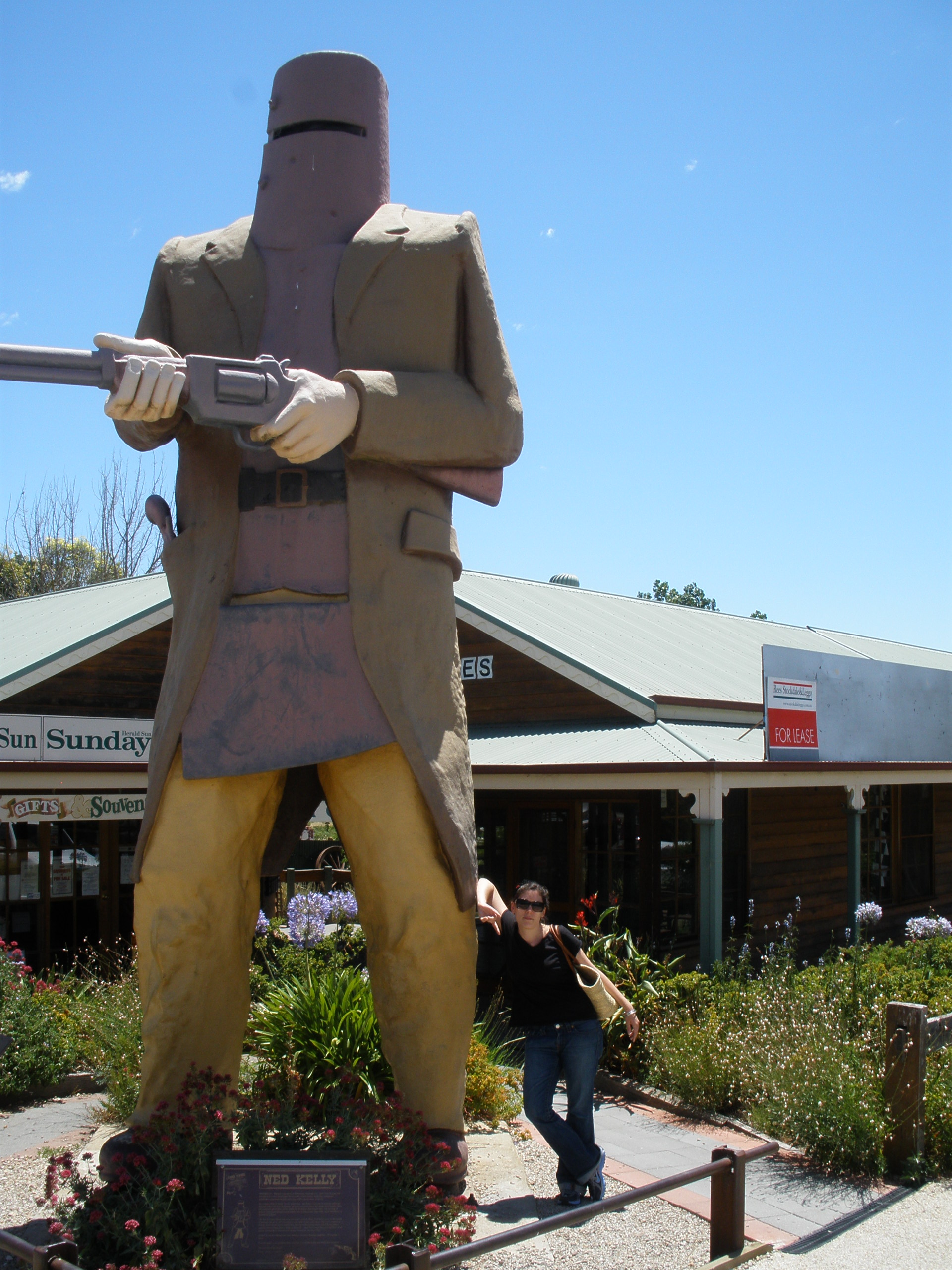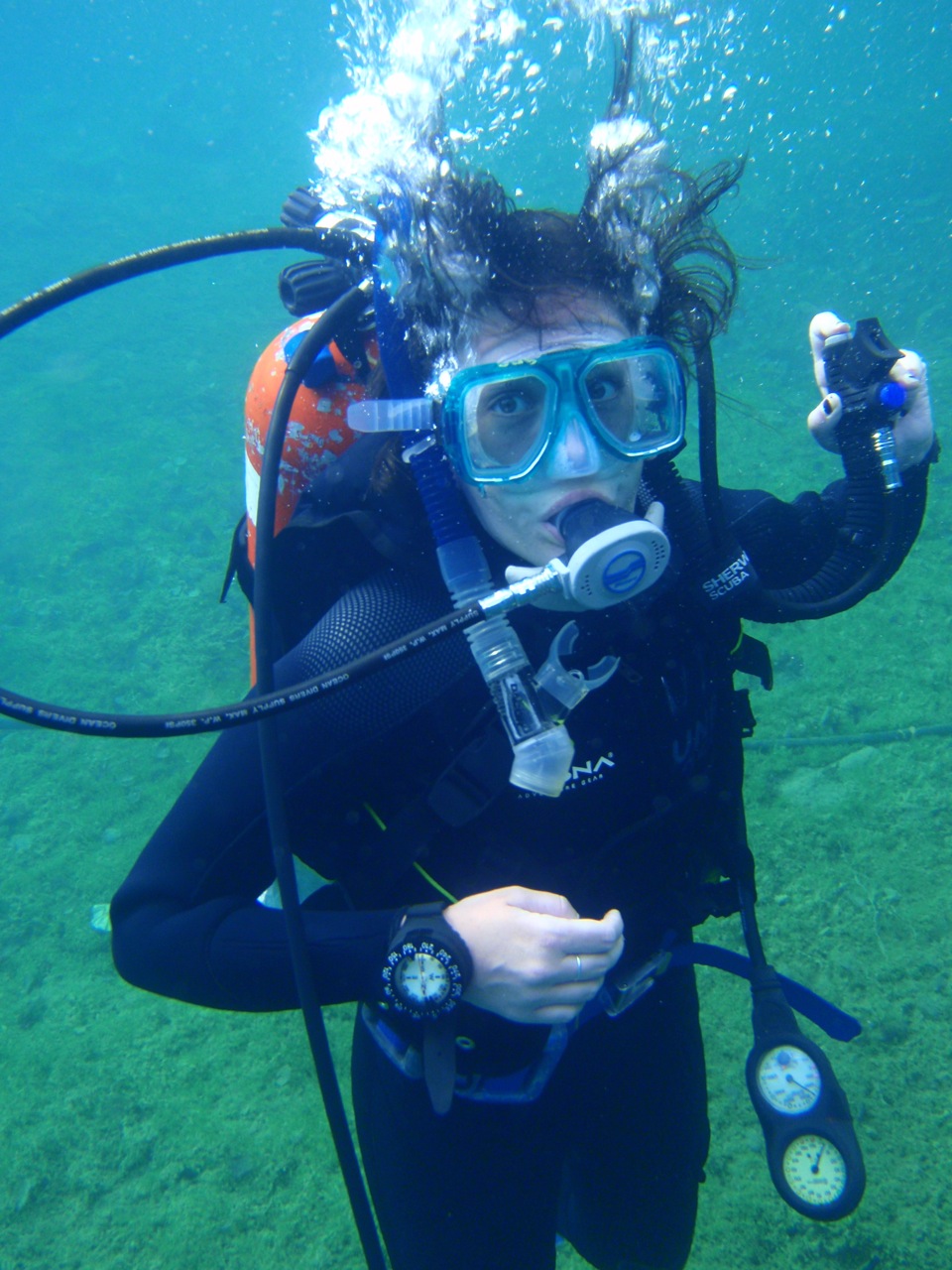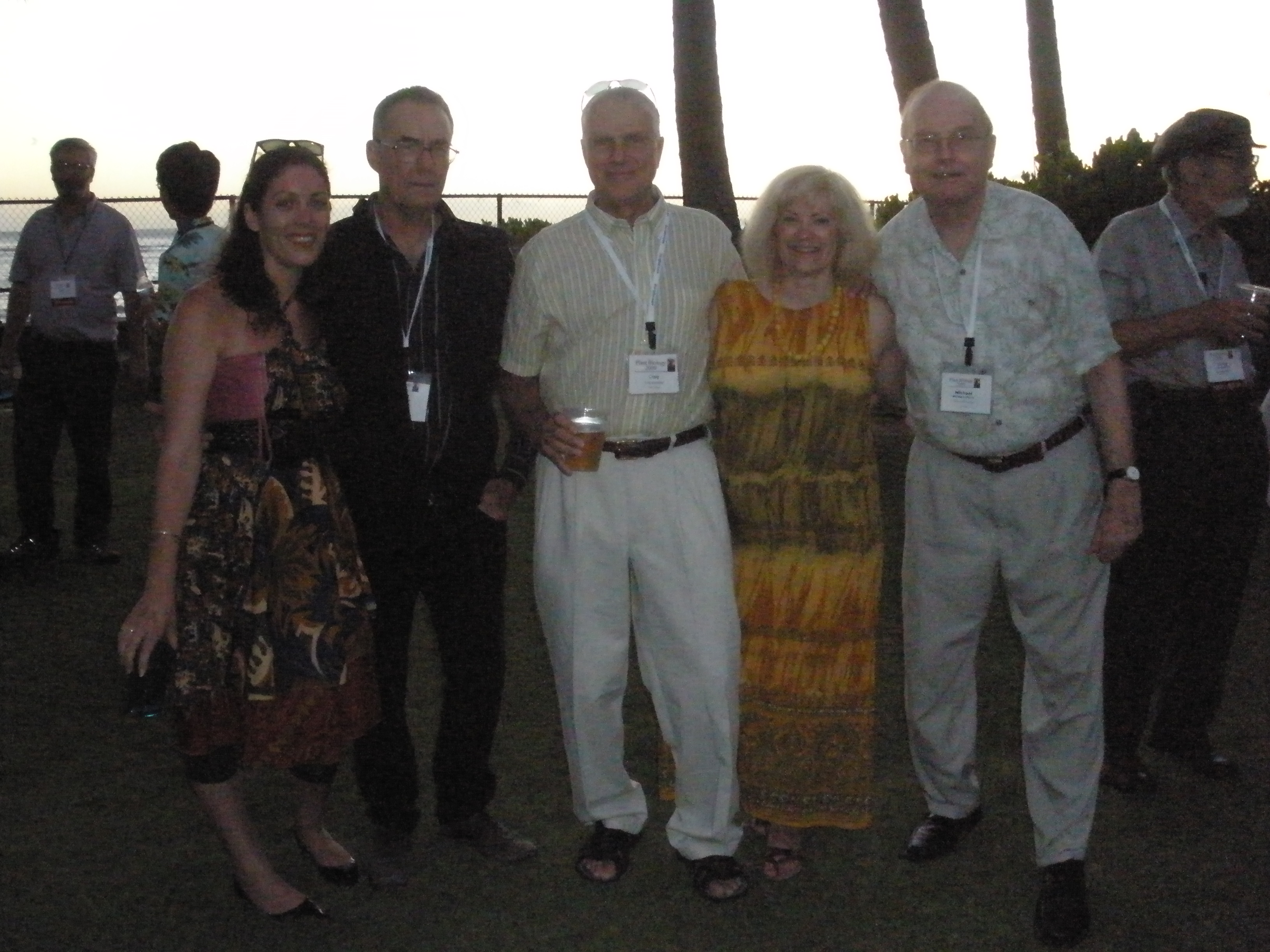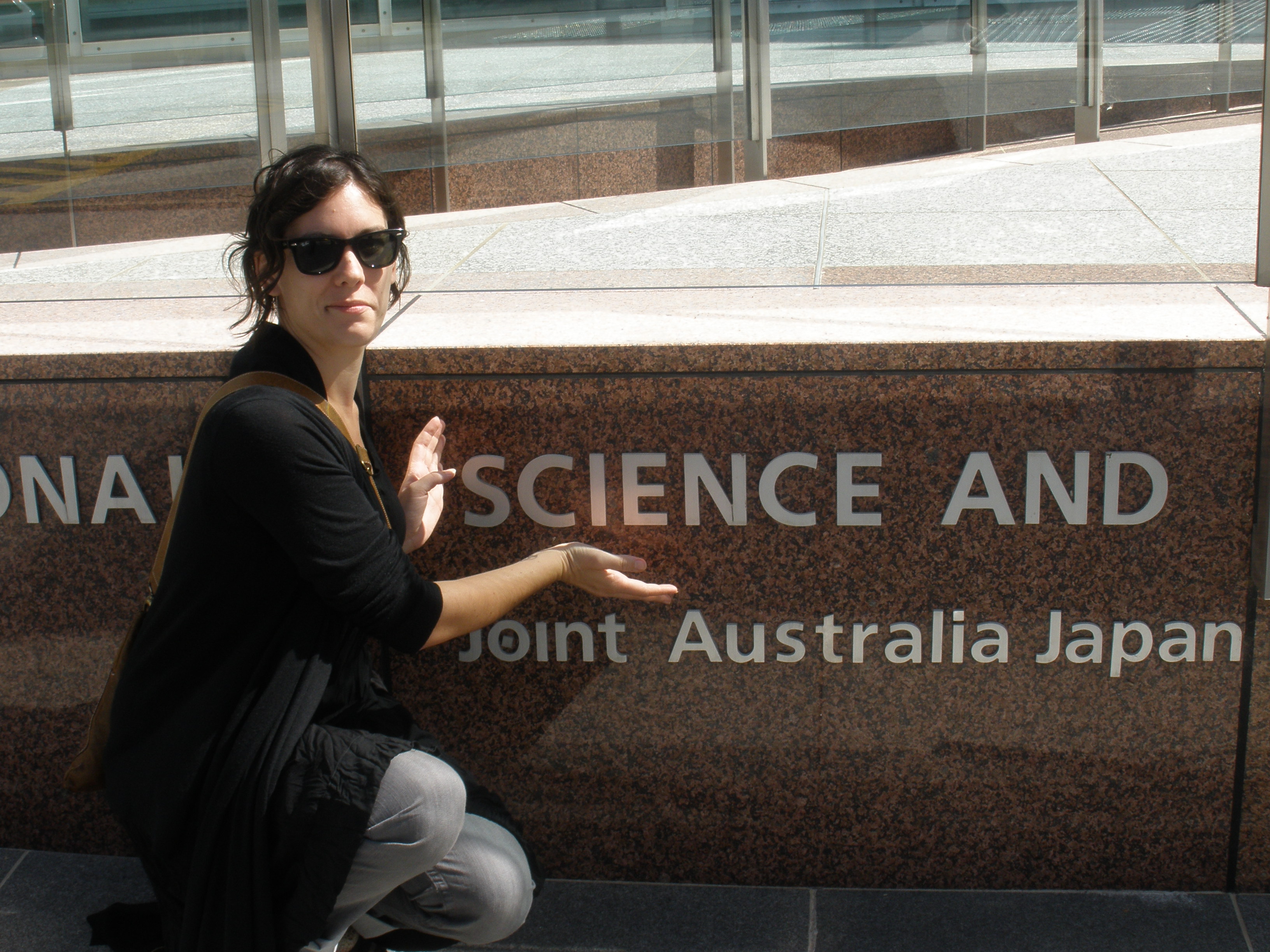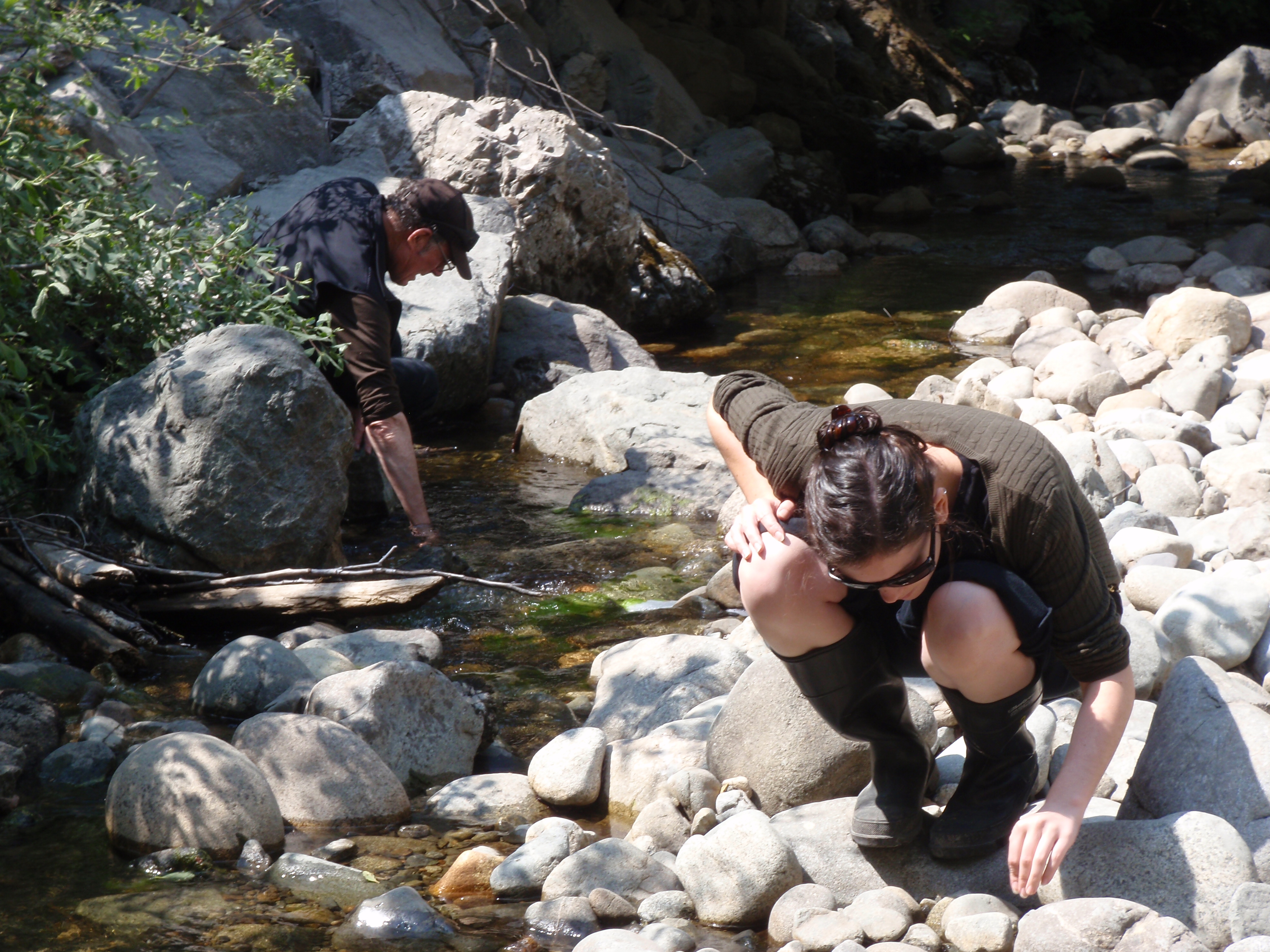After school I went off to the University of Hawaii at Manoa to study pre-med. There I became interested in the social sciences and went on to major in Psychology, French and English. Coming back to Australia, I recalled my love of the ocean and wanted to work on something that would allow me to play in the water. I undertook my Honours degree with Dr. Richard Wetherbee, working on Victorian tube-forming diatoms, using SEM and time-lapse video microscopy to identify and characterise culture behavior of Victorian tube-forming diatoms. After finishing, I decided to expand my biological horizons to include molecular biology, and applied to do my Masters degree with Dr. Ross Waller. In his lab I combined molecular phylogenetics with classical taxonomy to examine the morphologically simple and supposedly cosmopolitan green algal genus Ulva in Australia. With this combination of taxonomy and phylogenetics, we determined that the appreciation of the genus in Australia was severely limited by the erroneous assumption that Australian species conformed to largely European type descriptions. We described several new species and increased the range of the Californian Ulva tanneri to include northeastern Australia (Kraft, Kraft & Waller 2010).
Since graduating with my MSc, I have worked on a couple of diverse systems. From 2008-2009 I worked with Dr. Sven Gould, Dr. Ross Waller and Prof. Geoff McFadden on a project identifying important structural proteins in the ciliate Tetrahymena thermophila. As ciliates form a sister group to the apicomplexans (of which the causative agent for human malaria, Plasmodium falciparum, is a member), genes regulating ciliate cell structure have homologues in the apicomplexans. Using the easily manipulatable Tetrahymena model organism we could infer these proteins’ function in the apicomplexan parasites (Gould et al. 2011). Over the course of that work, we constructed overespression and knockout plasmids, expressed alveolin proteins in Tetrahymena (which are localised to the pellicle as ‘scaffold’ proteins), and attempted to create knockout strains. We collaborated with Dr. Jacek Gaertig of the University of Georgia to refine our ciliate transformation protocol using the Biolistic gene gun, and I was lucky enough to travel to Prof. Gaertig’s lab to work on that procedure. I next worked for three months with Dr. Barbara Howlett on the fungus Leptosphaeria maculans, the causative agent of the Blackleg disease that infects members of the genus Brassica specifically, in this case, Canola.
On a 2009 trip to Bamfield en route to the ASPB/PSA meeting in Hawaii, Prof. Gary Saunders offered me the incredible opportunity to apply my algal techniques to the more anatomically complex and diverse (and beautiful) Rhodophyceae. Less than a year later, I packed up and moved to Fredericton. The goal for my PhD is to use the DNA barcode (COI-5P), multi-gene molecular phylogenetics and alpha taxonomy to investigate the red algal order Halymeniales in Australian waters. The group suffers from all the impediments to accurate species conception that plague red algal taxonomy in general, namely relatively simple morphologies that are subject to plasticity and convergent evolution, confused species concepts and a reliance on female reproductive features to identify species. As Australia has the most abundant seaweed diversity in the world, it seems a rich (and personal) location to make the focus of my study. The strong interest in Australian marine algal flora in the Saunders lab, and the premier position of this lab in unifying molecular and alpha taxonomic techniques to better conceive marine flora, make it an ideal place for me to learn. In my time here as a student I aim to introduce myself to floristic analysis and build on my molecular biological and alpha taxonomic skill set. |
Papers
Kraft, L. G. K., Kraft, G. T. & Waller, R. F. (2010). INVESTIGATIONS INTO SOUTHERN AUSTRALIAN ULVA (ULVOPHYCEAE, CHLOROPHYTA) TAXONOMY AND MOLECULAR PHYLOGENY INDICATE BOTH COSMOPOLITANISM AND ENDEMIC CRYPTIC SPECIES. J. Phycol. 46: 1257-1277.
Gould, Sven B., Kraft, Lesleigh G. K., van Dooren, Giel G., Goodman, Christopher D., Ford, Kristina L., Cassin, Andrew M., Bacic, Antony, McFadden, Geoffrey I. & Waller, Ross F. (2011). Ciliate Pellicular Proteome Identifies Novel Protein Families with Characteristic Repeat Motifs That Are Common to Alveolates. Mol. Biol. Evol. 28: 1319-1331.
Conference Presentations
2011, April 15-17. Northeast Algal Society, Woods Hole, MA.
Poster title: AUSTRALIAN HALYMENIALES (FLORIDEOPHYCEAE, RHODOPHYTA), PAST, PRESENT AND FUTURE: USING THE DNA BARCODE TO ASSESS SPECIES DIVERSITY IN AN AUSTRALIAN RHODOPHYTE ORDER.
2009, July 18-22. American Society of Plant Biology/ Phycological Society of America meeting, Honolulu, HI
Title of talk: A study of Australian Ulva challenges notions of cosmopolitanism and the utility of anatomical species designations.
2009, October. Malaria in Melbourne. Co-author on a paper presented by Dean Goodman.
2008, February 17-20. Lorne Genome Conference, Lorne, Victoraia, Australia.
Poster title: Exploring southern-Australian distromatic and tubular Ulva species (Ulvaceae, Ulvales, Chlorophyta) based on morphology, anatomy and molecular- phylogenetic analyses. |
